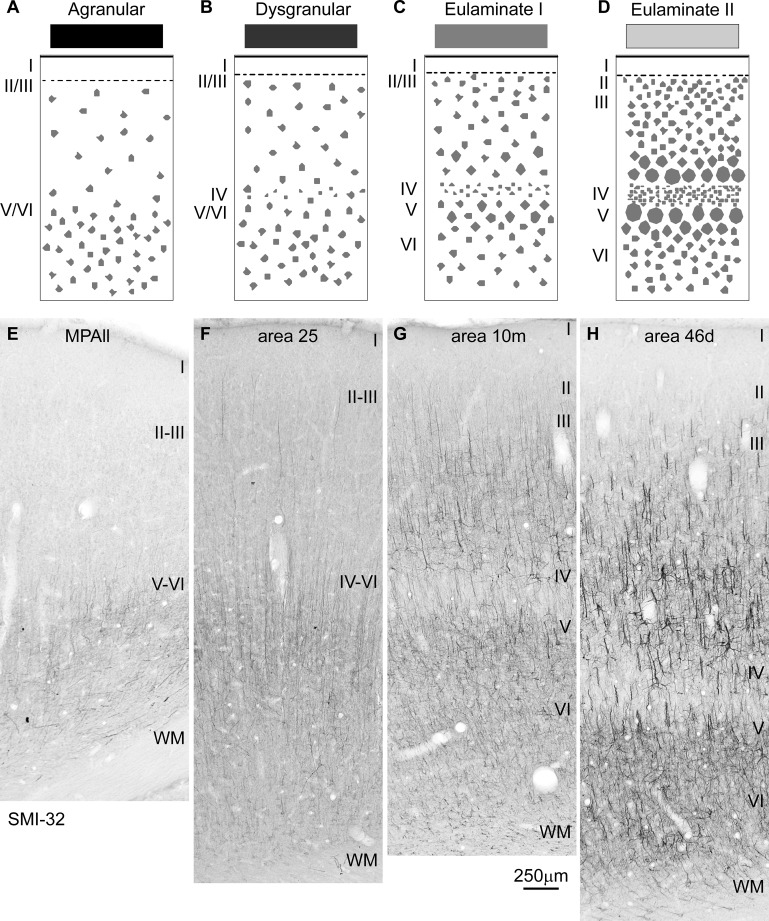Fig. 3.
Systematic variation in cortical laminar structure highlighted by SMI32 immunostaining. A–D: cartoons show systematic changes in laminar structure that can be used to group areas into types of cortex. Shades of gray (top) show types of cortices from the least (black) to the greatest (lightest gray) elaboration of laminar structure. E–H: coronal sections through the types of prefrontal areas depicted in A–D show that agranular areas have the lowest (left), and the best-delineated eulaminate areas have the highest (right), density of SMI32-labeled neurons. In eulaminate areas (G and H), layer IV stands out as a band of unstained tissue. E: agranular medial prefrontal area MPAll (medial periallocortex). F: the dysgranular part of area 25. G: eulaminate I area 10m. H: eulaminate II area 46d. WM, white matter. Roman numerals indicate cortical layers. Calibration bar in G applies to E–H.

